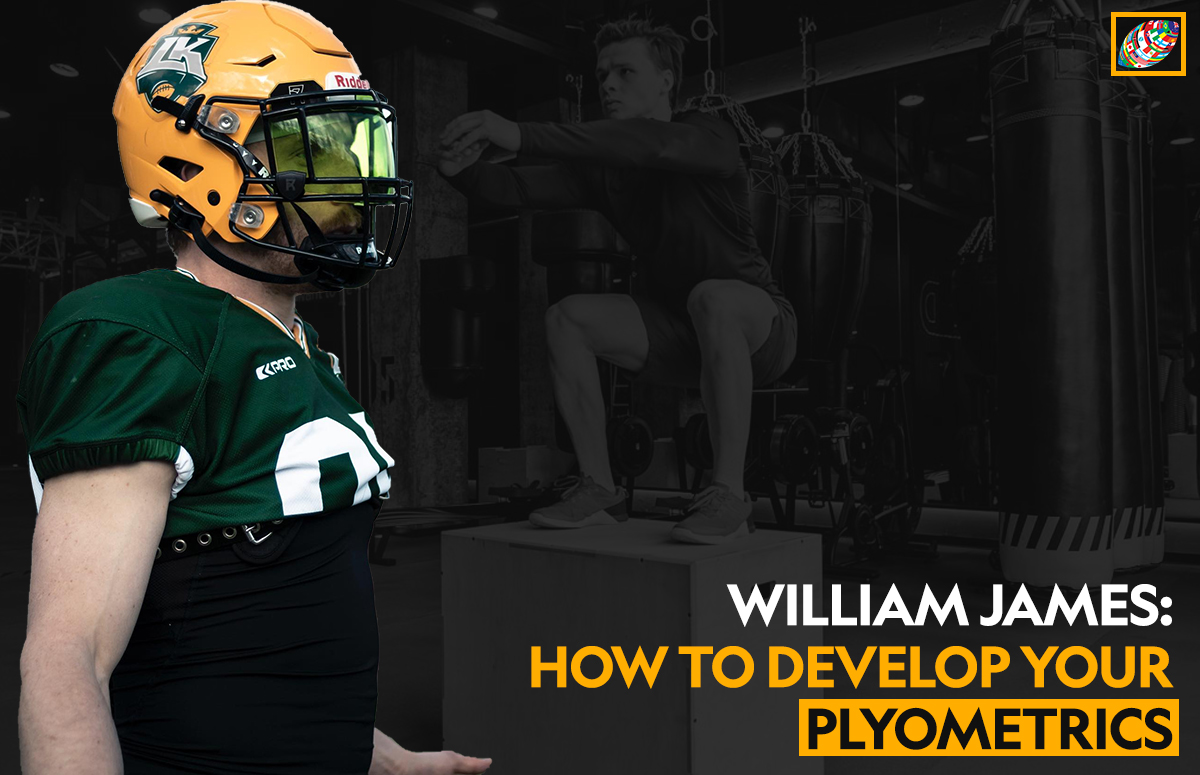AFI Training Series: How to develop your plyometrics

By William James
Introduction
In this article we will be discussing some ideas around how to develop your plyometrics. The first priority we had was speed. The second priority during training is to develop your plyometric arsenal as it carries the highest transfer over to sprinting and on-field performance after sprinting itself.
What are plyometrics?
Plyometrics simply involve an eccentric (landing) phase, amortization (transition) phase, and concentric (push) phase. A plyometric has to be executed in a relatively short amount of time in order to for the elastic energy that is produced from the landing to be efficiently used during the final jump.
Some trainers will separate plyometrics and jumps, where plyometrics will have an amortization phase of >250ms and jumps are longer contact times. For myself, in order to avoid paralysis by analysis phenomena, I prefer to view it all under the plyometric umbrella and I separate exercises by intent. For example, jumps for height or jumps for speed (floor is lava type of vibe). Then I will use my coach’s eye to adjust the drill for the athlete if we are seeing too long ground contact times. Intent is always what drives adaptation which is why I prefer the less “sciency” approach sometimes.
Components of plyometrics
There are three phases to a plyometric action
- Eccentric/yielding (think landing)
- Amortization phase (think time between landing and the beginning of the upward phase)
- Concentric/pushing (think upward phase)
And there are two vectors (which direction you’re going)
- Horizontal
- Vertical
Eccentric
The eccentric phase or simply the landing part. When observing athletes, what you will find is that some athletes spend a long time absorbing the force on the downward phase. This correlates to your ability to absorb and release energy. The quicker we can absorb, and transition back out of a movement the more quickness we can achieve on the field. Developing this skill comes from task, intent and partially strength training. Create tasks that require your athlete to jump as far as possible (max outputs) and tasks that require them to get off the ground as quick as possible (power outputs)
Amortization phase
This is the time where we’ve stopped our downward momentum, and we are transitioning into upward momentum. It is that very short moment of “dead stop.” In order to successfully transfer and rebound up higher, some studies indicate that this dead stop time needs to be >250ms. What we need to look and feel for is that if we are crumbling, there is too much force, and we need to resort to either getting bands for assisted jumps or decreasing the intensity.
Concentric
The concentric phase is simply the upward push, we’ve done all the dirty work of going down and transitioning, and now we just need to keep pushing to achieve our training task.
Horizontal plyometrics
In any training there is always a direction of where the forces are going. Horizontal simply means most of the force is being directed along the ground, in a straight line. I use horizontal plyometrics for acceleration development. These drills typically include broad jumps, bounds, acceleration hops etc.
Vertical plyometrics
Vertical plyometrics are when the forces are directed in an upward direction. This is more related to max velocity sprinting. These drills include vertical jumps, power skips for height, pogos etc.
How to progress plyometrics
There are an infinite number of ways to train plyometrics in terms of how to develop them in a sound way. Some trainers will break the phases down into separate blocks of training, such as a block of training for just landing etc. In my opinion, with the limited time to training that we have in Europe, rather than approaching training from structuralist view (individualizing components of training and building them separately) I believe we should use a holistic and constructivist approach. That means we train the entire movements and that the interaction between the components (landing, amortization, concentric in this case) are of higher importance.
As a result, when we train plyometrics we modify the intensity of the movement. We can start with easy “pogos” set to a metronome at 180bpm to ensure that athletes focus on low intensity, fast ground contacts as we build their capacity and tolerance for more intense and advanced movements.
In the beginning, for what is known as extensive plyometrics, aim to spend a month or even two building 2-400 contacts per week of different plyometrics. This is a general recommendation, and it will vary depending on your training history and more. Be smart, listen to your body.
Structure/function
Similar to sprinting, in the first half of the off-season I like to focus on developing capacity and tolerance first (the body needs time to adjust), gradually increasing the intensity to develop raw power output. In the span of about 6-7 months the number of contacts will go from about 400 extensive contacts to about 50-75 high intensity contacts. As we get closer to the season, the plyometric reps decrease and as we increase the demand for agility and attuning our newly gained capacities, they stay simple and minimalistic. Again, to re-iterate, plyometrics are special strength exercises. Their purpose is to overload movements we see on the field and learn how to be elastic and powerful with a time constraint.
Conclusion
Plyometrics can be extremely intense. It is important to listen to your body and aim for no more than 3-4 plyometric sessions per week (depending on phase of training, intensity etc.). Use plyometrics along with your sprints for maximum athletic gains.
If you have any questions or want to reach out, you can find me on Instagram @williamjames91
